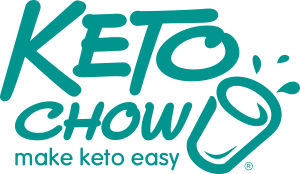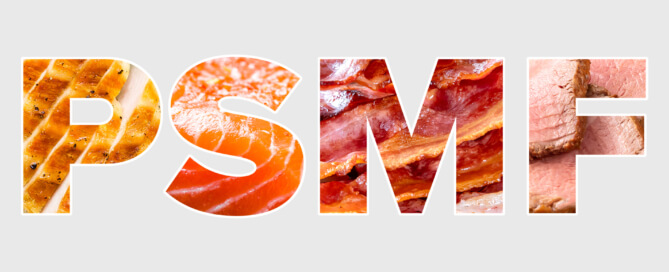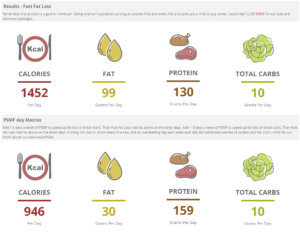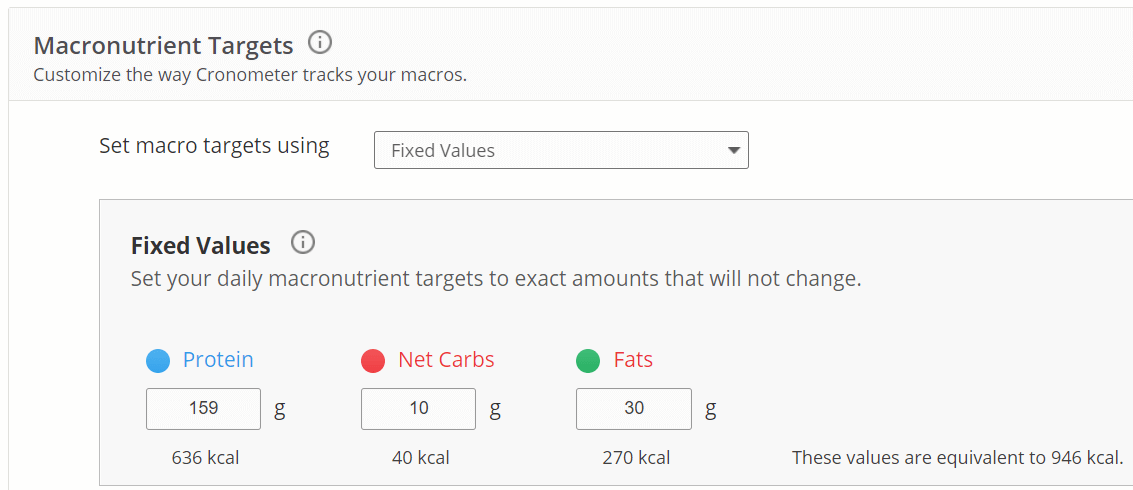Protein Sparing Modified Fasting AKA: PSMF or “Cut fat intake and up protein to break stalls” – with or without Keto Chow
The concept of a “Protein Sparing Modified Fast” or PSMF can sound a bit complicated at first, but it can be a fantastic way to break through a stall and cut body fat. PSMF isn’t for everyone and, depending on how you implement it, isn’t typically used for extended periods of time. You’re doing a sort of “fast” that’s designed to keep muscle protein intact (or “spare” it) while still letting your body consume stored fat for energy. The PSMF subreddit sums it up as:
PSMF is a ketogenic diet designed to jump-start a weight loss program (either for rapid fat loss for a body builder or those with some weight to lose) or break a stall. It is a modified fast and as such is not a lifestyle. The idea is basically to only eat to prevent lean muscle loss (protein).
The Basics of PSMF
With a typical Ketogenic diet you will be getting 20-50g of carbohydrates as an upper limit, with anywhere from 90-160g of protein (depending on goals, activity, and other factors), with fat as a variable that can come from the food you consume or from your body’s fat storage. For the rest of this article, I’m going to be using numbers from Maria Emmerich’s Macro Calculator. I’m setting the calculator to give numbers for a 220 lb, 40-year-old female with 35% body fat that we will call “Jane”; YOUR numbers will be different so please make sure you pull up the page and enter in YOUR measurements. The Calculator says that if Jane wants to lose weight quickly, she should use 2 different calorie/fat/protein/carb combinations (click to embiggen!):
If Jane had selected regular “Fat Loss” instead of PSMF, it would have told her to do 1659 calories with 118g of fat, 130g protein, and 20 total carbs. There are a few important points that I would like to cover here:
- You will notice that we are ALWAYS talking about grams of stuff, we are not using percentages for the fat/protein/carbs. Macro percentages are ONLY used for treating epilepsy and even then it’s more properly done with a 4:1 or other ratios of fat calories to other calories instead of percentages. If you’re looking at a “Keto Macro Calculator” that uses percentages it isn’t going to be useful, that’s why we consistently recommend Maria’s calculator over all others.
- If you have looked at other “Keto Macro” calculators, you may notice that the amount of protein recommended is WAY higher. Craig Emmerich covers a lot of the old fear that people used to have about protein and why it’s unfounded in his presentations about PSMF given at Keto Salt Lake 2021 – I highly recommend checking it out.
- The text above the figures reminds you that protein in a MINIMUM, get at least that much and you can go over if you stay below the calories (by getting less fat).
- Right there in the calculator results, it explains the basic setup of how to do PSMF “Add 1-3 days a week of PSMF to speed up fat loss or break stalls. Then Fast Fat Loss macros above on the other days. If doing this two or more weeks in a row, add an overfeeding day each week with 400-600 additional calories of protein and fat.“
- Maria recommends you stay under 10g of TOTAL carbs. You will quickly find that 10g of total carbs and 30g of total fat will necessitate a major change in how you eat on your PSMF days (hello chicken breast!).
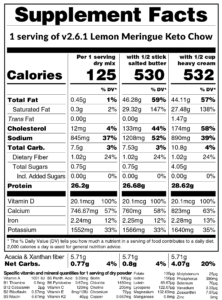 How you can use Keto Chow for PSMF
How you can use Keto Chow for PSMF
OK, we’ve covered some of what PSMF is and how to do it. How can you use Keto Chow as a tool to help you be successful with PSMF? First things first: we need to address the TOTAL carbs situation.
Most flavors of Keto Chow contain around 7.6g of total carbohydrates. If you wanted to use 3 meals of Keto Chow on your PSMF days, that would be 22.8g of total carbs before you even add any other food and 22.8 is more than 10! Here’s the thing about the total carbs in Keto Chow: 5.71g of that is acacia and xanthan gum fiber (mostly acacia). Acacia gum is some REALLY cool stuff, especially for a keto diet. There’s a long explanation of the benefits of acacia gum on keto on this page, but the short version is: your body can’t digest acacia gum, but your gut bacteria DOES and it turns the former carbohydrate into short-chain fats. Carbs in -> turned into fats = happy gut biome with energy for your intestinal cells. All of this is why I, personally, do not count acacia gum (or xanthan gum) towards my total carbohydrate limit. With that acacia and xanthan gum quantity removed, the result is 1.8g of fiber and lactose carbohydrates – let’s call it 2g just for fun. 6g of carbs from 3 meals of Keto Chow still leaves me with 4g and that’ll be taken up by the incidental carbs in mostly meat that I’m eating to cover the rest of my protein goal after 3x Keto Chow meals made with 10g of butter each.
Enough about me, let’s go back to Jane and her goals! Jane needs to get 159g of protein, under 30g of fat. For Jane, that means 78.6g of protein from 3 meals of Keto Chow (or 52.4g if she uses 2 meals of Keto Chow – the number of meals of Keto Chow is entirely up to you!). Jane will be 80g of protein short doing 3x Keto Chow, but she knows that she got a full 100% of her vitamins and minerals because of the Keto Chow. How can Jane get that additional 80g?
It’s time for Cron-o-meter!
We love Cron-o-Meter around here! More info here about using Cron-o-meter to track your net carbs. The key difference between Cron-o-Meter and most other tracking programs like MyFitnessPal and Carb Manager is the Cron-o-Meter uses a curated database. That means every entry you find has been verified to be correct. I switched from MyFitnessPal after I tried entering butter into my tracking and there were 7 different entries that were wrong, one even said “butter (net carbs)” butter has 0.01g of total carbs per tablespoon, it doesn’t need a “net carbs” entry! Anyhow, the intricacies of Cron-o-Meter are beyond this particular blog post, but Jane took the numbers from Maria’s calculator and put them into Cron-o-Meter as custom targets:
Jane goes ahead and enters the food she’s planning to eat that day. In this case, it’s 3 different flavors of Keto Chow, along with the 10g of butter that she’s having in each meal to make sure that she will be able to absorb the fat-soluble vitamins in the meals:
Wait a minute: the fat is a little high when she uses 10g of butter in each shake! 10g of butter has 8.1g of fat and each of the skinless chicken breasts also 6.1g of fat. Let’s change the amount of butter in each Keto Chow to 7g. That will make for 21g of butter in total. Jane still wants to get around 10g of fat per meal so she can either have a chicken breast as part of 2 meals, or actually split up the 2 pieces of meat into 3 portions and have 2/3 of a breast with each meal. Check out Jane’s targets NOW!
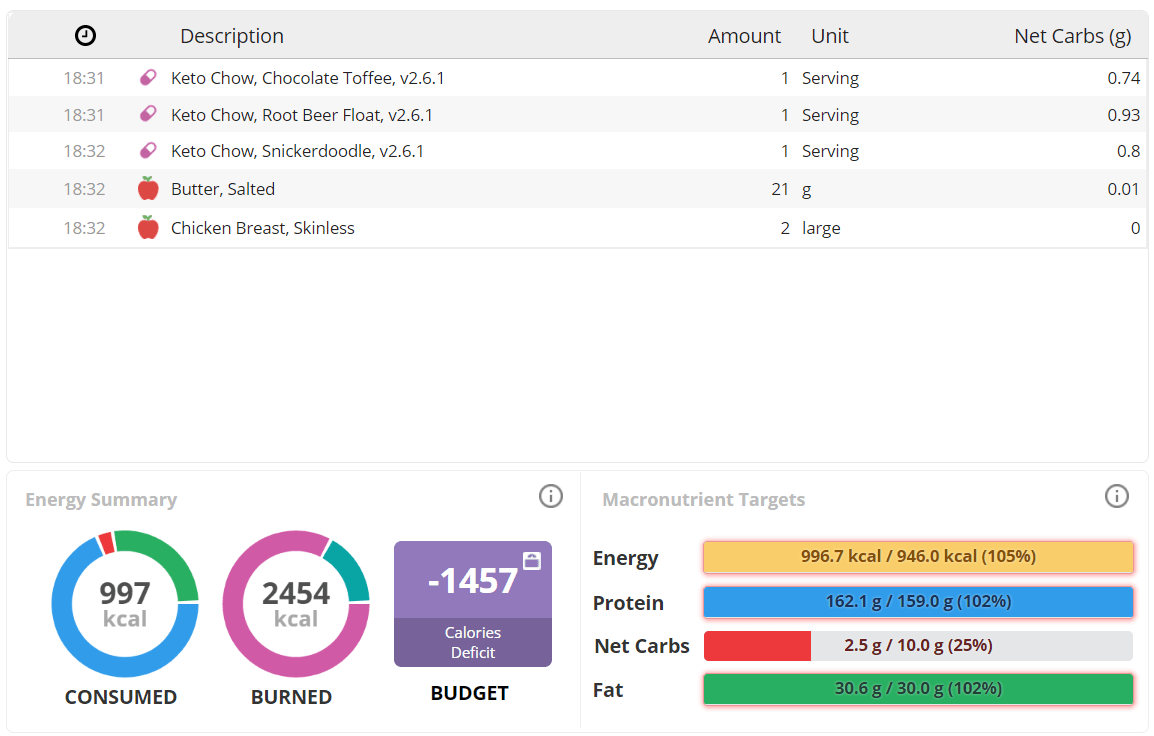 That looks REALLY good. Jane is half a gram over on fat and 3g over on protein, but both are exceptionally close to her targets. For her non-PSMF days, Jane could take the approach of maybe doing 2 Keto Chow and having some beef for her 3rd meal. In fact: Jane decides to go to have 2 of the same 7g of butter Keto Chow shakes she had the previous day and then she’s going to go to Texas Roadhouse and get a 12oz Prime Rib along with a side salad.
That looks REALLY good. Jane is half a gram over on fat and 3g over on protein, but both are exceptionally close to her targets. For her non-PSMF days, Jane could take the approach of maybe doing 2 Keto Chow and having some beef for her 3rd meal. In fact: Jane decides to go to have 2 of the same 7g of butter Keto Chow shakes she had the previous day and then she’s going to go to Texas Roadhouse and get a 12oz Prime Rib along with a side salad.
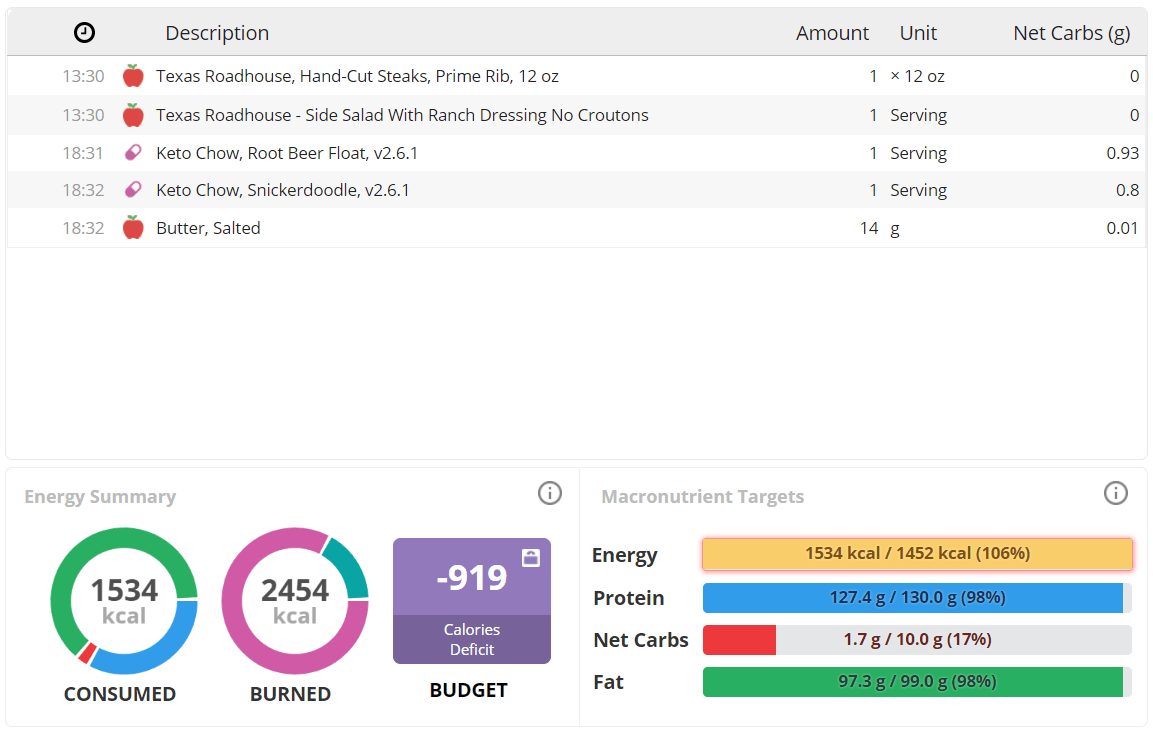 Honestly, that’s phenomenal. Jane has a good plan in place! Additional PSMF Resources:
Honestly, that’s phenomenal. Jane has a good plan in place! Additional PSMF Resources:
- Craig Emmerich presentation about PSMF given at Keto Salt Lake 2021
- Maria and Craig PSMF information
- 2Krazy Ketos – Protein Sparing Modified Fasts
- The PSMF Subreddit

